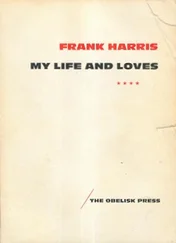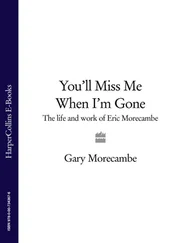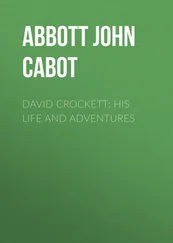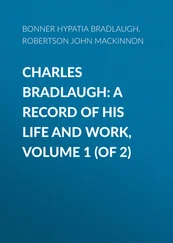William Frith - John Leech, His Life and Work, Vol. 2 [of 2]
Здесь есть возможность читать онлайн «William Frith - John Leech, His Life and Work, Vol. 2 [of 2]» — ознакомительный отрывок электронной книги совершенно бесплатно, а после прочтения отрывка купить полную версию. В некоторых случаях можно слушать аудио, скачать через торрент в формате fb2 и присутствует краткое содержание. Жанр: foreign_antique, foreign_prose, на английском языке. Описание произведения, (предисловие) а так же отзывы посетителей доступны на портале библиотеки ЛибКат.
- Название:John Leech, His Life and Work, Vol. 2 [of 2]
- Автор:
- Жанр:
- Год:неизвестен
- ISBN:нет данных
- Рейтинг книги:5 / 5. Голосов: 1
-
Избранное:Добавить в избранное
- Отзывы:
-
Ваша оценка:
- 100
- 1
- 2
- 3
- 4
- 5
John Leech, His Life and Work, Vol. 2 [of 2]: краткое содержание, описание и аннотация
Предлагаем к чтению аннотацию, описание, краткое содержание или предисловие (зависит от того, что написал сам автор книги «John Leech, His Life and Work, Vol. 2 [of 2]»). Если вы не нашли необходимую информацию о книге — напишите в комментариях, мы постараемся отыскать её.
John Leech, His Life and Work, Vol. 2 [of 2] — читать онлайн ознакомительный отрывок
Ниже представлен текст книги, разбитый по страницам. Система сохранения места последней прочитанной страницы, позволяет с удобством читать онлайн бесплатно книгу «John Leech, His Life and Work, Vol. 2 [of 2]», без необходимости каждый раз заново искать на чём Вы остановились. Поставьте закладку, и сможете в любой момент перейти на страницу, на которой закончили чтение.
Интервал:
Закладка:
A great deal has been said – and with a certain amount of truth, no doubt – about the difference between a drawing on wood as it leaves the hands of the artist, and as it appears after its sufferings at the hands of the wood-engraver. Leech is reported to have replied to an admiring friend, who was extolling one of his drawings:
"Ah, wait till you see what it looks like in Punch next week."
I once saw one of Leech's drawings on the wood, and I afterwards saw it in Punch , and I remember wondering at the fidelity with which it was rendered. Some of the lines, finer than the finest hair, had been cut away or thickened , but the character, the vigour, and the beauty were scarcely damaged. To Mr. Swain, who for many years cut all Leech's drawings, the artist owed and acknowledged obligation; he thought himself fortunate in avoiding certain other wood-cutters, who were somewhat remorseless in their operations.
Mr. Swain, the wood-engraver, writes:
"For twenty-five years I engraved nearly all Mr. Leech's drawings. I always found him kind, and willing to forgive any of my shortcomings in not rendering his touches in all things. My work was always against time. I seldom had more time than two days to engrave one of his drawings in.
"Photographing drawings on wood was not known in his time, or it would have been a great advantage to him; instead of drawing on the block, he would then have drawn on paper, as most artists do in the present day, and had his drawings photographed on the wood, thus preserving the finished drawings, which would have been of great value now; besides, it would have been a great help to the engraver, always to have the original drawing to refer to in engraving the blocks.
"He never had any models, and rarely ever made any sketches. He showed me a little note-book once with a few thumb-nail sketches of bits of background, but he seemed never to forget anything he saw, and could always go back in his memory for any little bit of country street he might want for background, etc.
"It was generally very late in the week before he could get his drawings ready, which gave very little time to the engraver to do justice to his work.
"His first introduction to Punch was through Mr. Percival Leigh.
"Mr. Leech was a man of very nervous temperament. I will give you an instance of this. Mr. Mark Lemon told me one day that Leech had been invited to a gentleman's house in the country for a few days' hunting. He arrived there in the evening. He was awakened early in the morning by a grating noise made by the gardener rolling the gravel under his window – noise he could never endure. This had such an effect upon his nerves, that he got up, packed his things, and was off to town before any of the family were aware of it. A barrel-organ was to him an instrument of torture.
"He had lived in Russell Square for many years, but for some time before his death he took a large house – 6, The Terrace, Kensington.
"I remember going to see him at his new house. He took great delight in showing me over it, and pointing out that he had had double windows put in all over the house to keep all noises out ."
CHAPTER V.
INVENTORS AND ILLUSTRATORS
In looking at the plethora of lovely women's faces in the "Pictures of Life and Character," the spectator may fairly ask himself to realize, if he can, anything more exquisite; and if he fail, he will also fail to imagine that the charming creatures could have suffered much in their passage from the wood to the paper.
I have said elsewhere that Charles Dickens was an occasional guest at the Punch Wednesday dinners; he was also an intimate friend of several of the writers, notably of Leech, Lemon, and Douglas Jerrold. Dickens was, of course, one of Thackeray's warmest admirers, but I am pretty sure that the friendship between those great men could never have reached intimacy. Though Leech failed in his application for the post of illustrator of the "Pickwick Papers," he showed himself to be at one with the great writer in the etchings and woodcuts with which he ornamented Dickens' Christmas books, in conjunction with Stanfield, Maclise, Cattermole, and others. Though Leech's etchings are inferior as works of art to his wood-drawings, they still show the same beauty, and perfect realization of character; in this assertion I am borne out by the illustrations in the "Christmas Carol," and by those in the "Haunted Man and the Battle of Life."
In my own profession I have observed, almost as a rule, that the artist who habitually invents his own subjects – in other words, draws upon himself for original ideas – generally fails, comparatively, in his attempts to realize the ideas of others. May I not say the same of many writers? Dickens, for instance, wrote of the life about him; but if, like Scott, he had attempted to revive the past, would he have produced work worthy to rank with "David Copperfield"? Scott seems to me a still more conspicuous supporter of my theory, for he tried modern life in "St. Ronan's Well," and produced a book incontestably inferior to "Kenilworth."
Our historical painters have almost invariably failed in their attempts upon everyday life; this extends even to the painters of genre . Witness the works of the elder Leslie, who painted scenes from Shakespeare, Molière, and the poets of the last century, with a success that would have delighted the authors; but when he sought inspiration from the life about him, the result was far from satisfactory – conspicuous, indeed, in its contrast with his perfect rendering, of "Sir Roger de Coverley" or "Uncle Toby," and the alluring "Widow Wadman."
But the greatest of English painters is the greatest help to me in the contention into which I venture to enter. Hogarth was beguiled by a spirit, which must have been evil, into painting huge Scripture subjects. The size of these pictures, always of the proportion of full life, was unsuited to his hand, while the themes became ludicrous under his treatment. He failed completely also as an illustrator, witness his designs from "Hudibras." In the Bristol Gallery, and in the Foundling Hospital, these specimens of perverted genius may be seen; and no one can look at them without regret that time should have been so misspent – time which might have given us another immortal series like the "Marriage à la Mode."
I fancy I can hear my readers say – And what has all this to do with John Leech? Well, this: Leech is now about to pose as the destroyer, in his own person, of my theory – he is, in fact, the exception to my rule; for though the incidents in Albert Smith's "Ledbury" and "Brinvilliers" bear no comparison in human interest with the delightful transcripts of real life to be found in such profusion in the pictures of "Life and Character," Leech's rendering of them could not be surpassed.
The tragic and humorous powers of the artist are fully displayed in the examples which follow. In the first, from "Ledbury," "Jack Johnson attempts to rescue Derval": the awful swirl of the river as it engulfs the drowning man, while his would-be rescuer, finding the stream too strong for him, clings frantically to a ring in the stonework of the bridge, a full moon lightning up the scene, and throwing the Pont Neuf which spans the Seine in the distance into deep shadow – all are combined with admirable skill into, perhaps, the most powerful etching and the most perfect illustration in the book.
In the second example the artist is in full sympathy with his author – "Mrs. De Robinson holds a Conversazione of Talented People;" and amongst them is "the foreign gentleman who executes an air upon the grand piano." Here we have Leech using the scene as a peg upon which he can hang the humorous character in which he takes such hearty, healthy delight. The performer himself is scarcely a caricature of the foreign pianist; while his audience, not forgetting the deaf old lady in the corner – includes the affected gentleman, whose soul is in Elysium; together with a variety of types, in which "lovely woman" is not forgotten.
Читать дальшеИнтервал:
Закладка:
Похожие книги на «John Leech, His Life and Work, Vol. 2 [of 2]»
Представляем Вашему вниманию похожие книги на «John Leech, His Life and Work, Vol. 2 [of 2]» списком для выбора. Мы отобрали схожую по названию и смыслу литературу в надежде предоставить читателям больше вариантов отыскать новые, интересные, ещё непрочитанные произведения.
Обсуждение, отзывы о книге «John Leech, His Life and Work, Vol. 2 [of 2]» и просто собственные мнения читателей. Оставьте ваши комментарии, напишите, что Вы думаете о произведении, его смысле или главных героях. Укажите что конкретно понравилось, а что нет, и почему Вы так считаете.
![William Frith John Leech, His Life and Work, Vol. 2 [of 2] обложка книги](/books/748201/william-frith-john-leech-his-life-and-work-vol-cover.webp)










